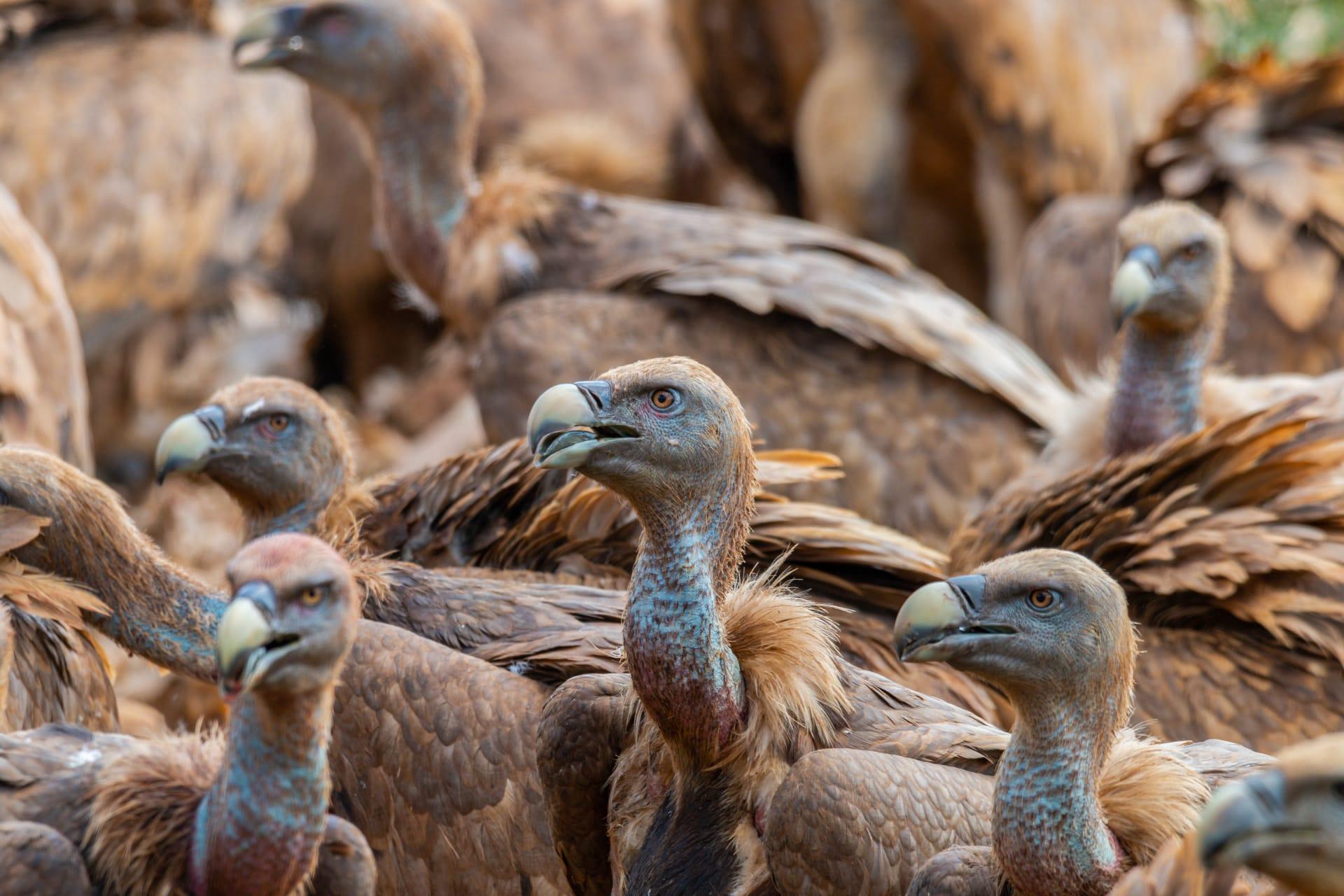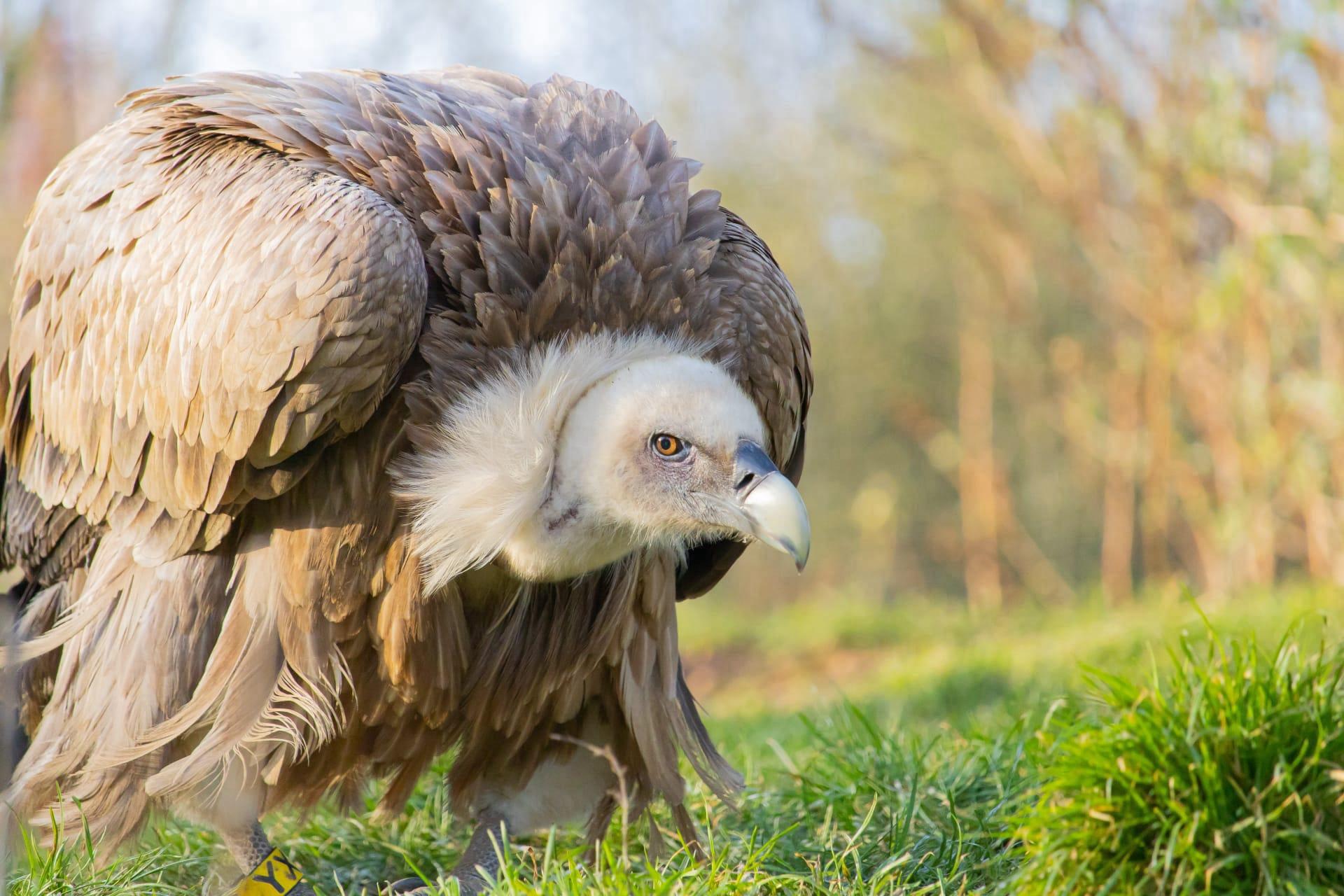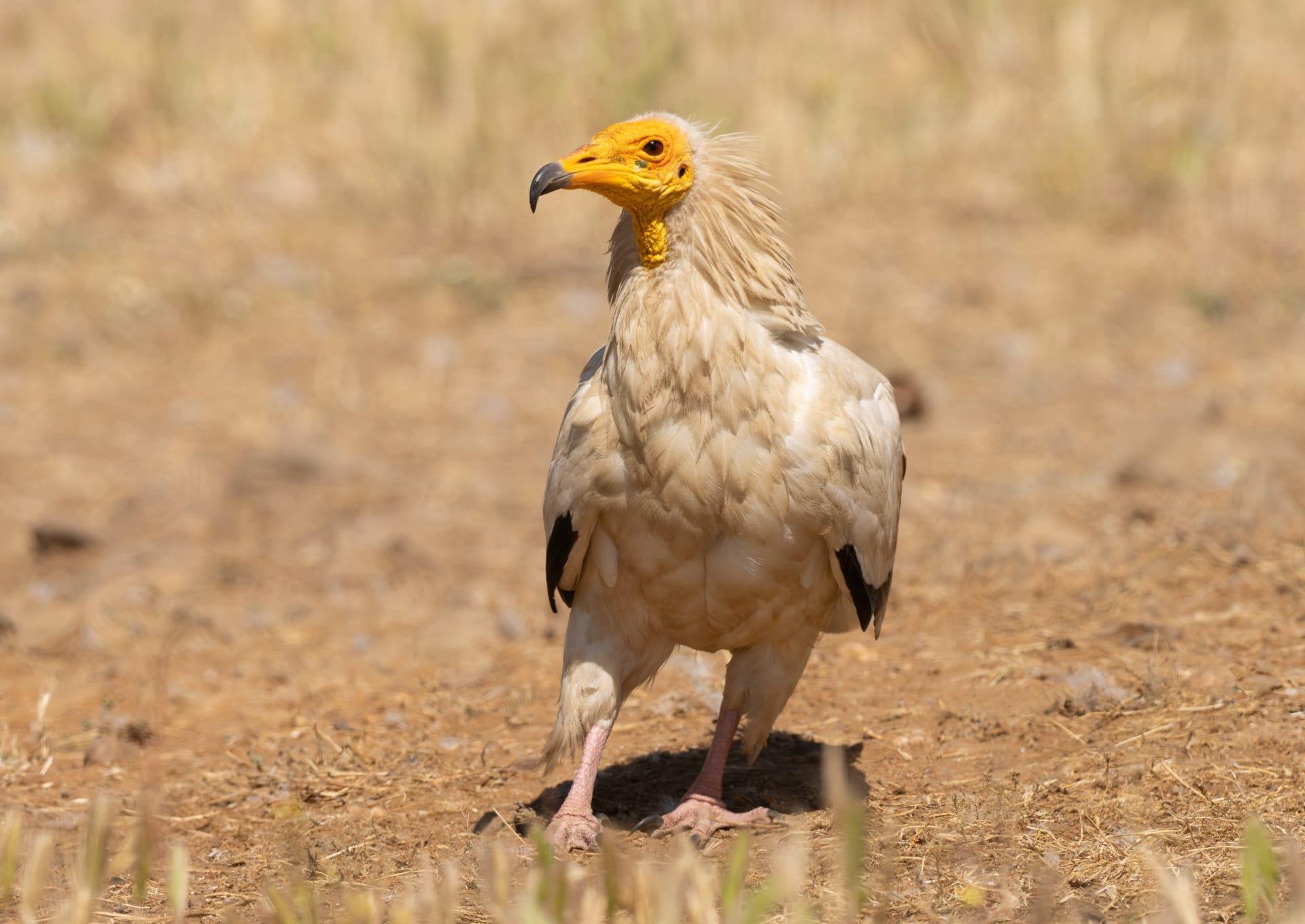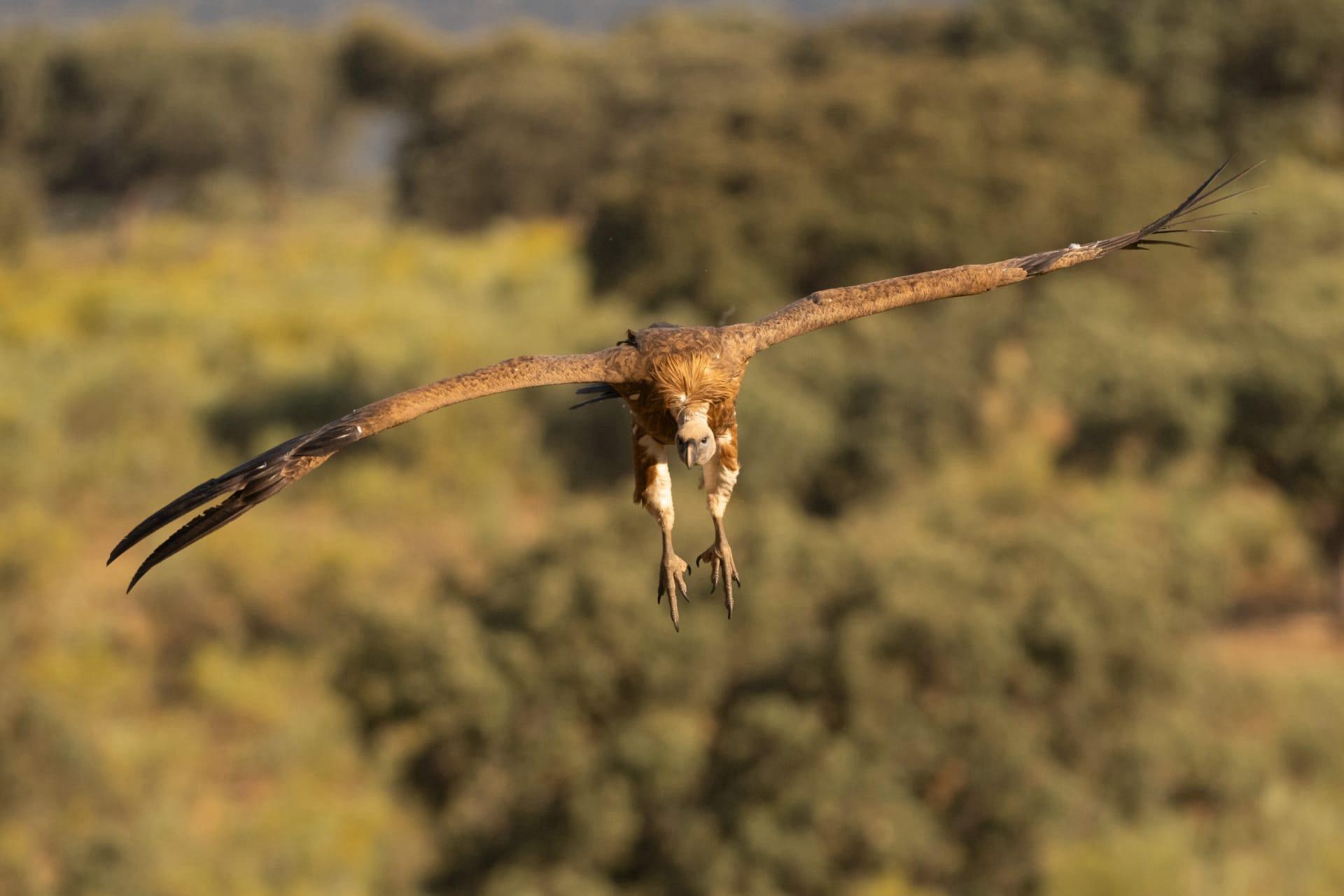1
Did you know that vultures can fly at incredible heights? Some species, like the Rüppell's griffon vulture, have been spotted at altitudes as high as 37,000 feet (11,278 meters) – that's the cruising altitude of commercial airplanes! This is possible thanks to their specialized hemoglobin, which allows them to absorb oxygen effectively even in thin air.
Another fascinating fact about these birds is their remarkable sense of smell. The turkey vulture, for instance, has a highly developed olfactory system and can detect the scent of decaying carcasses from almost a mile away. This is quite rare among birds, as most rely primarily on their vision for locating food.

2
Vultures play a crucial role in our ecosystem by being nature's clean-up crew. They primarily feed on carrion (dead animals), which helps prevent the spread of diseases from rotting corpses. Their stomach acid is exceptionally corrosive, enabling them to safely digest putrid carcasses infected with bacteria like anthrax, botulism, and cholera that would be lethal to other scavengers.
Interestingly, vultures are very social creatures. They are often seen roosting in large groups and soaring in the sky together. When one vulture finds a food source, it will often attract others to the feast. This behavior not only helps them locate food more efficiently but also plays a role in their social bonding and communication.

3
Vultures have a unique way of keeping cool. In a process called urohidrosis, they urinate on their legs. The urine evaporates, which cools the blood vessels in the legs and lowers the bird’s body temperature. This might sound gross, but it's an effective way for them to beat the heat. Plus, the uric acid in their urine helps to kill bacteria, keeping their legs clean after walking through carcasses.
Did you know that vultures are monogamous and often mate for life? These birds engage in intricate courtship rituals, which include graceful aerial displays and mutual preening. Once paired, vultures are very cooperative in building nests and raising their young, with both parents sharing responsibilities like incubation and feeding.

4
Vultures don't have vocal cords, which means they can't sing like other birds. Instead, they communicate through grunts and hisses. This may not be as melodious as a songbird's chirp, but it's effective for communication within their social groups, especially when vying for food or warning each other of potential threats.
These birds have an impressive wingspan, which aids in their ability to soar for long periods without much effort. For example, the Andean condor, one of the largest members of the vulture family, can have a wingspan of up to 10.5 feet (3.2 meters). This allows them to glide effortlessly on air currents, conserving energy while scanning vast areas for food.

5
Vultures are often misunderstood and thought to be aggressive, but they are actually quite passive and non-confrontational. They prefer to avoid conflict and will often retreat from a food source if challenged by other animals. This gentle nature contradicts the often negative portrayal of vultures in popular culture.
Lastly, it's fascinating to know that vultures play a significant role in certain cultural and religious practices. For instance, in the ancient Zoroastrian religion, they practice "sky burials," where the deceased are left in open-air structures to be consumed by vultures. This is seen as a way of returning the body to nature and is a crucial part of their burial rituals.